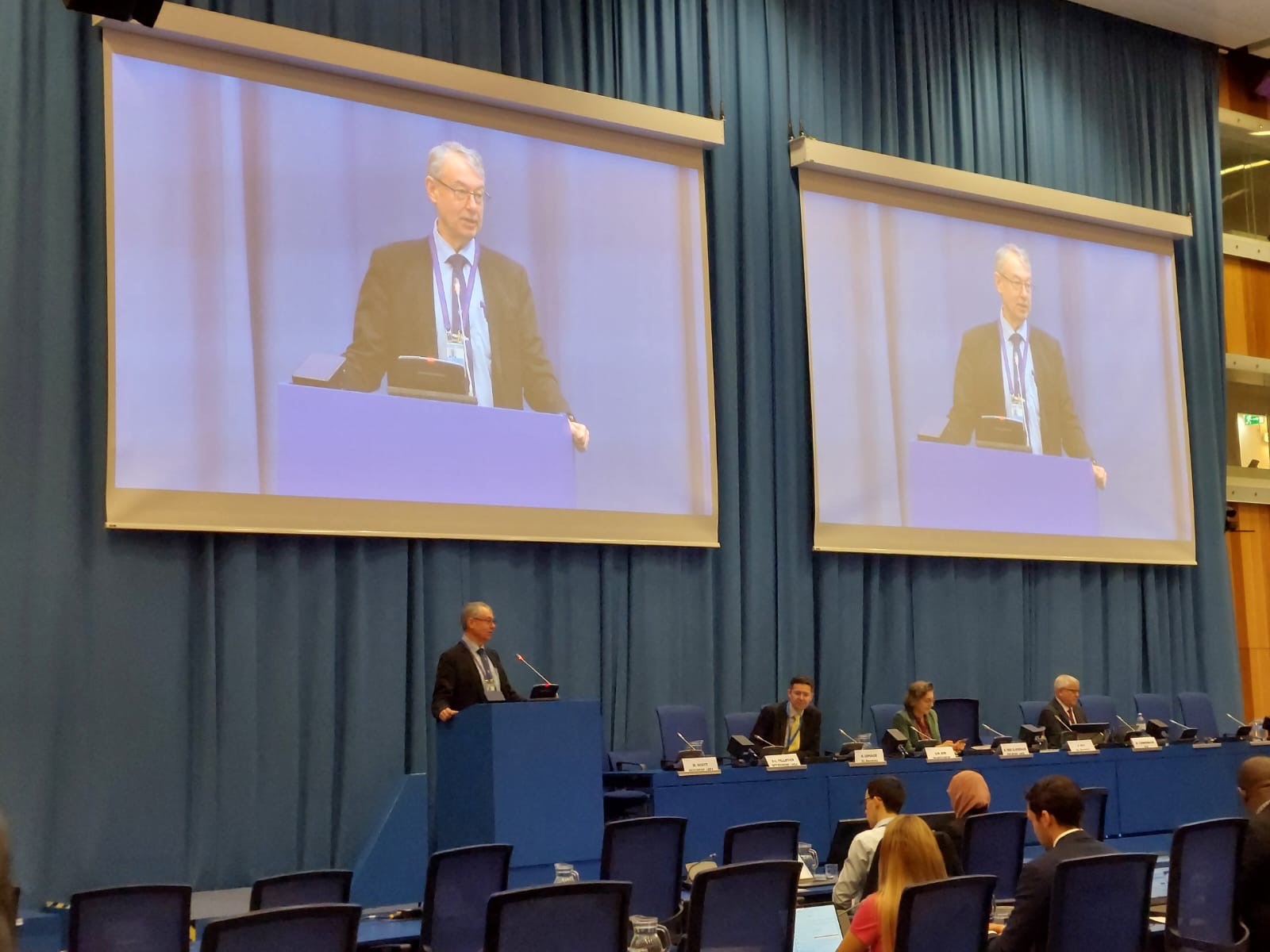Representatives of the nuclear industry and regulators meeting at the IAEA welcomed the findings of a new IAEA publication on how to use serially manufactured parts to speed up procurement and production of small modular reactors (SMRs)-and ensure safe and reliable supply chains for this emerging nuclear technology.
The IAEA technical document, titled Suitability Evaluation of Commercial Grade Products for Use in Nuclear Power Plant Safety Systems, is the fruit of efforts by the Industrial Track of the IAEA's Nuclear Harmonization and Standardization Initiative (NHSI), which was launched last year by Director General Rafael Mariano Grossi to facilitate the deployment of safe and secure SMRs and other advanced reactors. The new publication was presented at a technical meeting in Vienna last week, attended by more than 100 nuclear plant operators, suppliers, and regulators.
"Nuclear power is not simple and probably never will be, but can it be made simpler than it is right now? Yes, it can be," said Marc Tannenbaum, the meeting's chair and technical lead at the Electrical Power Research Institute (EPRI) in the United States of America, as he opened the proceedings.
Indeed, nuclear energy will need to be deployed faster: for the first time in history, the final agreement of the annual UN Climate Change Conference (COP28) called for the deployment of low emission technologies, including nuclear power, to be accelerated to enable deep and rapid decarbonization, also for energy intensive areas. The historic inclusion of nuclear energy at COP28 came after 22 countries pledged to work towards tripling nuclear power generating capacity by 2050.
How to achieve such aspirations? One of the solutions explored by NHSI is the adoption of common, standardized approaches to nuclear designs and components. If adopted widely, such advances could help streamline and speed up the newbuild process. For example, rather than using expensive bespoke parts requiring long production times, nuclear designers could avoid manufacturing disruptions and support the supply chain by making full use of parts already used in other industries requiring high levels of safety.
"If reactor designers agreed to standardize more-as other high-end industries have done-using tried and tested off-the-shelf products that are already available, deployment of nuclear reactors would be faster and certainly cheaper," said Aline des Cloizeaux, Director of the IAEA Division of Nuclear Power. "A nuclear power programme still needs a proper quality assurance with suitability and safety analyses at plant and systems level, but a graded approach is possible at component level to allow the use of commercial grade items without compromising safety or performance."
The TECDOC provides practical guidance based on previous good practices, and is to be used in conjunction with the IAEA Safety Standards and other publications dealing with management systems, project management, supply chain management and quality.
Anu Koppel, a meeting participant and a supply chain manager at Fermi Energia, an Estonian SMR project developer, explained the value of the new guidance. "Say we need a valve for our new SMR, and rather than design it from scratch, find someone to make it and get it approved for use, I can now check what already exists-say, in a jet engine-and use the guidance to find out whether that part meets nuclear codes and can be used in our SMR," Koppel said. "If yes, that will without doubt be a more reliable, cheaper, and faster part to procure".
Some countries already have a mechanism in place to have some serially manufactured components approved by regulators. "Early engagement and use of a common digital platform between suppliers, operators and regulators has enabled us to have a good certainty that high quality industrial items are used in nuclear power plant safety related systems in Finland," said Kim Wahlstrom of the Finnish Radiation and Nuclear Safety Authority.
Pekka Pyy, a senior IAEA expert in the Nuclear Power Engineering Section added that using serially manufactured items is one of the common approaches that is gaining more and more acceptance. "This was also the finding of a recently published working paper by the Industrial Track group of NHSI."
Engineering standards, non-nuclear standards-such as fire and building codes-and requirements for components with long manufacturing time were some of the topics discussed during the week. Several SMR developers also presented their challenges, strategies and solutions for using different standards and managing their suppliers.
Through NHSI, the IAEA is bringing together decision makers from governments, regulators, designers, technology holders, operators, non-traditional end-users, and other international organisations to collaborate under one framework. Members meet several times a year and work in two parallel tracks, regulatory and industrial. The next meeting involving all NHSI stakeholders will take place in 2024.

IAEA Technical Meeting on the Harmonization and Use of Industrial Codes and Standards for Small Modular Reactors took place from 12 to 15 December 2023 in Vienna, Austria. (Photo: IAEA).






